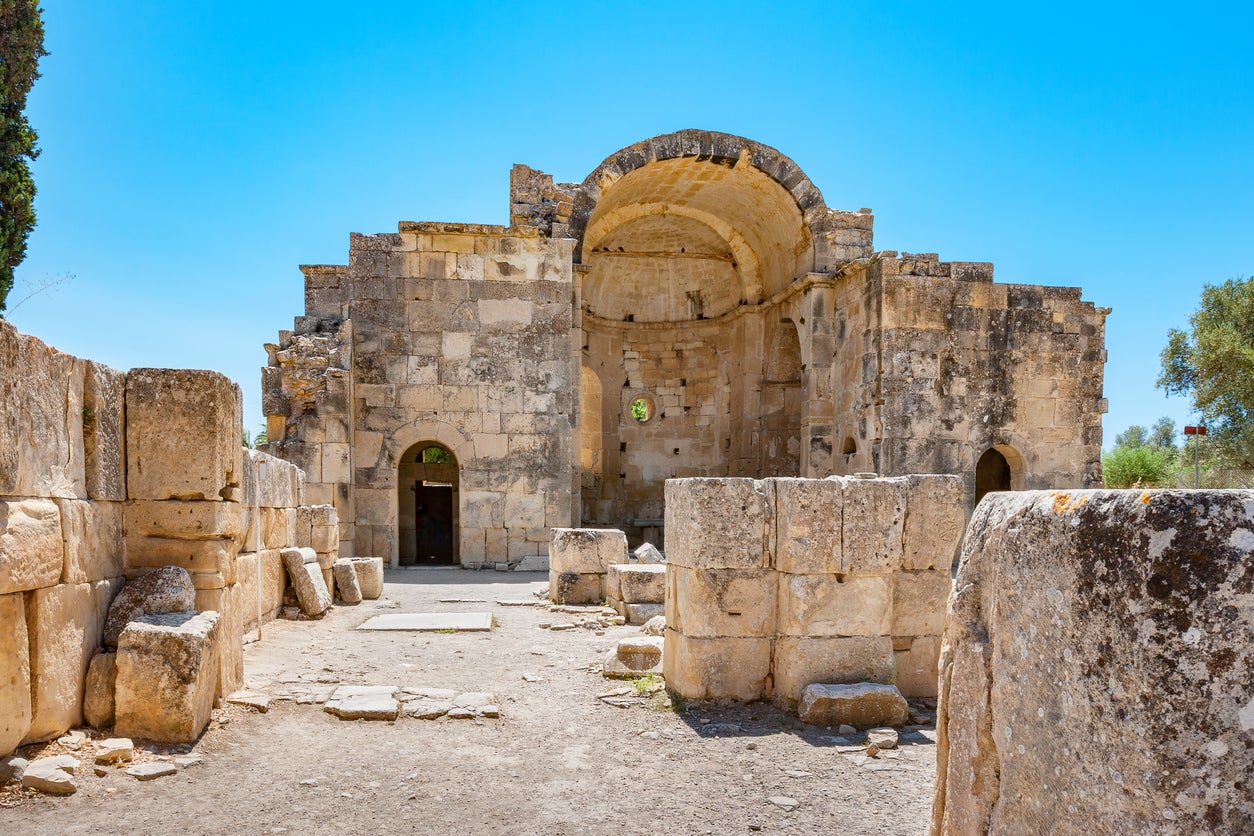This might just be the coolest museum in Europe – in every sense
In June, it was so hot in Athens that Greek authorities closed the Acropolis, but a pilgrimage to a historical site in summer doesn’t have to be so punishing, says Michael Hodges, who has uncovered one of the most fascinating museums in the region – which is also completely chill in terms of crowds and temperature

Across the Mediterranean, we wait in line and we wilt. From the Prado to the Parthenon, the fierce, occasionally deadly, heatwaves that have settled on southern Europe this summer have made queuing for museums, galleries and archaeological sites a grim and sweaty business – especially in Greece.
In June, Athens was so hot that Greek authorities closed the Acropolis. In the same month, visitors hoping to see the Minoan treasures in northern Crete’s Heraklion Archeological Museum, and then visit the Minoan palace complex at Knossos where many of those treasures come from, experienced outside temperatures of 44.5C.
Some in that sweltering throng might have wondered if they would survive; most will have wished for a less stressful alternative. Well, now there is one and it might just be the coolest museum in Europe – in every sense.
An hour south of Knossos, the exterior of the new Archaeological Museum of the Messara is a long brick wall that appears to float in the stony Cretan landscape. Pass through the hidden opening and the heat subsides as you enter 2,900 square metres of spacious climate-controlled calm within.
You are unlikely to be jostled by crowds. The museum welcomed its first Greek visitors in 2023 but the wider world has yet to discover the Minoan, Mycenaean, Roman and Byzantine delights that make up the permanent collection, all dug up in the region around the museum.
On my early morning visit in June only one or two other people wandered through the corridor and exhibition halls, scarcely believing they really had the place to themselves. “Amazing!” said a lone German I passed in the sculpture hall, where a group of Greek and Roman statues are gathered as if on a football terrace.
Messara means “between the mountains” and the museum takes its title from the long green vale of fertile farmland of that name in the south of the island, sandwiched by the forbidding wall of Mount Ada in the north and the gentler Asterousia range to the south.

Extending west to the coast at Matala, where a young Joni Mitchell lived with the hippies amid the Roman cave tombs in 1970, and east to the Dikti mountains, the Messara is scattered with traces of the Minoans and their remarkable civilisation. The most notable sites are the broad terraces of the hilltop Minoan palace complex at Phaistos, the nearby remains of a Minoan royal villa at Agia Triada and the ruined city of Gortyna, one of the most important archaeological sites in Greece.
Barely a kilometre away from the Archaeological Museum of the Messara, Gortyna became the largest city in Crete under the Mycenaeans. Later the Romans made it the capital of Cyrene and Crete but before all that Gortyna was a major Minoan centre. Here they dug the clay and fashioned the playful and knowing ceramics and sculptures of frogs, bulls and dancers that so enchant us now.
These objects, like the delicate and delightful drinking cups that await only the splash of cave-chilled wine, are still inhabited by the people they were made by. Being close to them is the real joy but the museum excels in interpretation. Heraklion may hold the famous Phaistos Disc, a circle of fired clay inscribed with Minoan symbols of Mohican-headed men, swords, birds, fish and more obscure symbols found at Phaistos in 1908, but here the interactive digital displays explain the context and, as far as we can know, meanings of those strange marks.
When the British archaeologist Sir Arthur Evans worked on Knossos between 1900 and 1931 he recreated the site as a neo-Victorian imperial centre. The effect of his efforts, when combined with the cruel tyranny of King Minos in Greek myth, has been to shroud the Minoans in an atmosphere of violent monarchy.
The art in the museum, so full of joy and curiosity, suggests Minoan society was far more advanced than that. The Minoan’s zeal for trading meant they carried their knowledge around the Mediterranean and the ceremonial goods they bequeathed us show that its women were men’s equal.
The Messara museum lets us see who the Minoans really were – productive, inquisitive and imbued with humour. This was a civilisation that valued each human encounter. And, one senses, knew how to keep cool.





Join our commenting forum
Join thought-provoking conversations, follow other Independent readers and see their replies
Comments